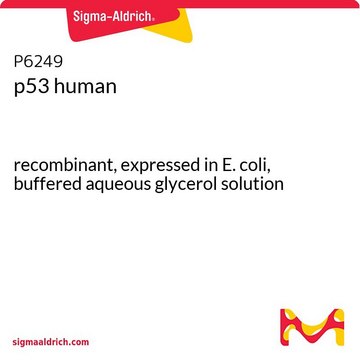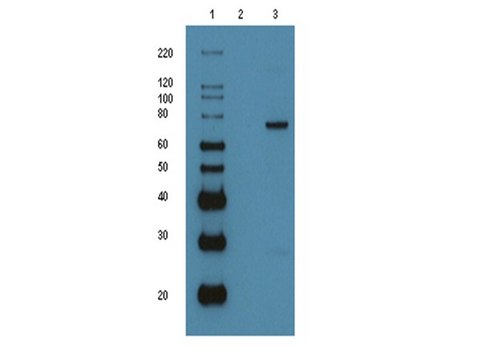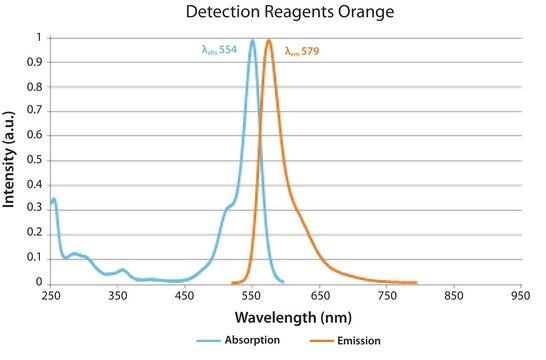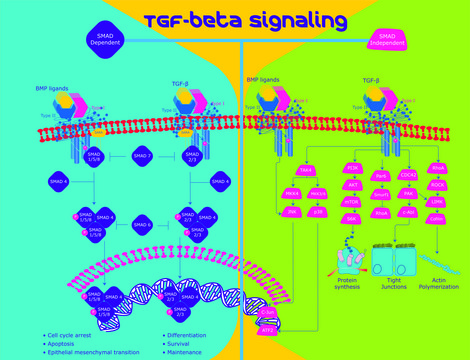P6374
p53 human
recombinant, expressed in baculovirus infected Sf21 cells
Se connecterpour consulter vos tarifs contractuels et ceux de votre entreprise/organisme
About This Item
Code UNSPSC :
12352202
Nomenclature NACRES :
NA.25
Produits recommandés
Source biologique
human
Niveau de qualité
Produit recombinant
expressed in baculovirus infected Sf21 cells
Essai
≥90% (SDS-PAGE)
Forme
aqueous solution
Technique(s)
dot blot: suitable
Numéro d'accès UniProt
Application(s)
genomic analysis
Conditions d'expédition
dry ice
Température de stockage
−70°C
Informations sur le gène
human ... TP53(7157)
Vous recherchez des produits similaires ? Visite Guide de comparaison des produits
Description générale
p53 protein is composed of an N-terminal domain with a transactivation domain and proline-rich region, a central core-DNA binding domain, and a C-terminal domain with tetramerization and regulatory domains. The TP53 gene which encodes for the p53 protein is mapped on the human chromosome at 17p13.1.
Application
Useful for the study of postranslational modification of p53, or protein-protein interaction studies.
p53 human has been used in dot blot.
Actions biochimiques/physiologiques
In addition, p53 was recently shown to induce differentiation of human embryonic stem cells. The effect is dependent on the DNA binding activity of p53.
p53 gene is highly conserved and expressed in normal tissues. It is the most commonly mutated gene in human cancer and more then 500 gene mutations have been described in various types of malignancies, hematologic as well as solid tumors. Intact p53 function is essential for the maintenance of the non-tumorogenic phenotype of cells. Thus, p53 plays a vital role in suppressing the development of cancer.
p53 protein acts as a transcription factor that participates in regulating positively or negatively the expression of several responsive genes. It plays a role in regulating angiogenesis, cellular senescence, autophagy, cell survival, differentiation, and oxidative stress. Mutations in the TP53 gene lead to Li Fraumeni cancer syndrome.
Propriétés physiques
Histidine-tagged, full length human p53
Forme physique
Supplied as a solution in 20 mM Tris-HCl, pH 8.0, 20% glycerol, 100 mM KCl, 0.2 mM EDTA, and 1 mM DTT.
Code de la classe de stockage
10 - Combustible liquids
Classe de danger pour l'eau (WGK)
WGK 3
Point d'éclair (°F)
Not applicable
Point d'éclair (°C)
Not applicable
Faites votre choix parmi les versions les plus récentes :
Déjà en possession de ce produit ?
Retrouvez la documentation relative aux produits que vous avez récemment achetés dans la Bibliothèque de documents.
Notre équipe de scientifiques dispose d'une expérience dans tous les secteurs de la recherche, notamment en sciences de la vie, science des matériaux, synthèse chimique, chromatographie, analyse et dans de nombreux autres domaines..
Contacter notre Service technique








